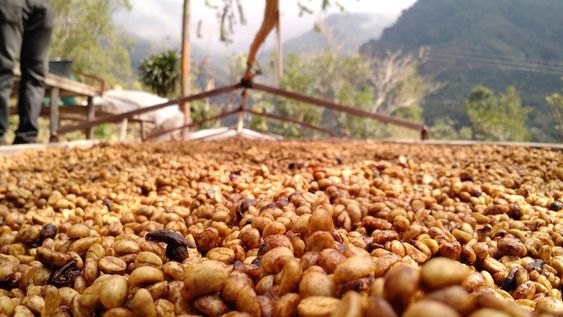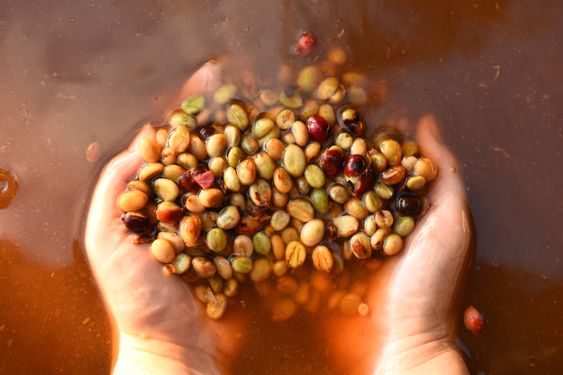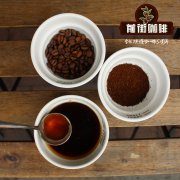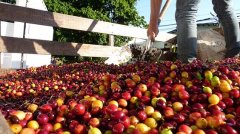Innovative treatment of coffee beans difference of three processing methods of coffee beans: sun exposure, washing and honey treatment
Innovative treatment method
As innovative treatment methods have become a trend in recent years, many new or deformed treatment methods continue to appear, bringing many different taste spectrum experiences. But also because of the emergence of these treatments. Simply citing the classification of several traditional treatment methods in previous years, such as sun treatment (Unwashed/Natural), honey treatment (Honey Process) or peeling and solarization (Pulp Natural), washing treatment (Washed), wet shaving (Wet-hulling/Giling Basah), etc., it is no longer possible to fully analyze the subtleties of one treatment.
On the other hand, dry fermentation, wet fermentation, low temperature fermentation, anaerobic fermentation, whole fruit / peel fermentation, lactic acid fermentation, yeast fermentation, slow fermentation … All kinds of different treatment methods are not independent, for example, anaerobic + whole fruit + low temperature, and finally a slow drying is a possible combination. In short, these processing methods / processing techniques are not exclusive, but can be combined with or even deformed to adjust their parameters.
The difference between sun exposure, water washing and honey treatment
The main boundaries and concepts of the traditional sun treatment, honey treatment, water washing treatment (Washed) and wet planing (Wet-hulling/Giling Basah) are relatively clear and clear.
The main results are as follows: 1. The whole fruit is dried by sun treatment (Natural/Unwashed).
After removing the pulp, the sun drying method turns the coffee seeds through the sun several times a day. The advantage is that the coffee beans can absorb the taste of the pulp and peel from the long exposure process, making the coffee sweeter and thicker. In addition, except that a large amount of water is needed to remove floating beans, there is no need to use water, so it can be regarded as a relatively low-cost method of raw bean treatment, or in some coffee-producing areas where water resources are scarce.

2. After washing off all pectin, drying with white shell beans is called water washing treatment (but nowadays more and more water washing methods are no longer using water washing, but machine planing / grinding all pectin, which we also classify as water washing treatment).
The treatment method, which was born in order to improve the shortcomings of the sun method, can be said to be a widely used method at present. Similarly, the floating beans are removed in the sink, and the pulp and exocarp of the coffee are removed through the pulp screening machine, then the pectin layer is removed by fermentation, and then the fermentation bacteria and impurities are washed and dried with a large amount of water, and finally dried.
Coffee beans treated by washing avoid the problem of easy mildew. Due to the fermentation process, the beans usually show bright sour and fruity flavors.

3. After peeling, the fruit pulp is dried for honey treatment.
Presumably the name "honey processing" itself may be a little misleading. Most people who have heard or drank honey-treated coffee will think that honey-treated coffee is a description of aroma or a taste, or even honey-like spices are added to the processing of coffee beans. As a matter of fact, there are neither of these situations, nor is that what I mean.
A coffee buyer who came to Costa Rica from Japan in 2003 asked for a "PULP NATURAL" (natural sticky paste) instead of traditional washed coffee. This is because two major coffee bean companies in Japan, from Illy and Guataro in Italy, use this semi-washed Brazilian coffee in their mixed coffee bean noodles.
They want to expand the purchase option, based on affirming the quality of Costa Rican coffee beans, so they put forward the concept of semi-washing and asked Costa Rica to use semi-washing to deal with coffee beans. The results showed that the coffee beans treated by semi-washing not only had rich aroma, but also reduced the original acidity of Costa Rican coffee and improved the overall coffee flavor.
Because the mucous membrane on the surface of half-washed coffee beans feels sticky, and that stickiness feels like honey, the word "Honey" was born because it gives people a visual feel like honey.
Important Notice :
前街咖啡 FrontStreet Coffee has moved to new addredd:
FrontStreet Coffee Address: 315,Donghua East Road,GuangZhou
Tel:020 38364473
- Prev

What is fine matching beans better than single beans? how to adjust the proportion of fine beans?
In the past, formula beans have always been a common practice. However, for baristas and bakers in the third wave of boutique coffee shops, formula beans are not popular, perhaps because of concerns about the transparency and quality of their information, so many stores have switched to individual coffee beans as their main force. Recently, there are some signs that formula beans have gradually evolved with higher quality and traceability.
- Next

What is the anaerobic fermentation treatment of coffee? the characteristics of anaerobic fermentation treatment
With the emergence of anaerobic fermentation treatment, with the increasing prosperity of the global boutique coffee market, more and more attention has been paid to quality from the production end to the consumer end. From planting, to post-harvest, to extraction, every link is in the stage of development, every once in a while there are always new techniques, new concepts, new models are used in the coffee industry. In terms of post-treatment, in recent years, in addition to the traditional
Related
- Beginners will see the "Coffee pull flower" guide!
- What is the difference between ice blog purified milk and ordinary milk coffee?
- Why is the Philippines the largest producer of crops in Liberia?
- For coffee extraction, should the fine powder be retained?
- How does extracted espresso fill pressed powder? How much strength does it take to press the powder?
- How to make jasmine cold extract coffee? Is the jasmine + latte good?
- Will this little toy really make the coffee taste better? How does Lily Drip affect coffee extraction?
- Will the action of slapping the filter cup also affect coffee extraction?
- What's the difference between powder-to-water ratio and powder-to-liquid ratio?
- What is the Ethiopian local species? What does it have to do with Heirloom native species?

